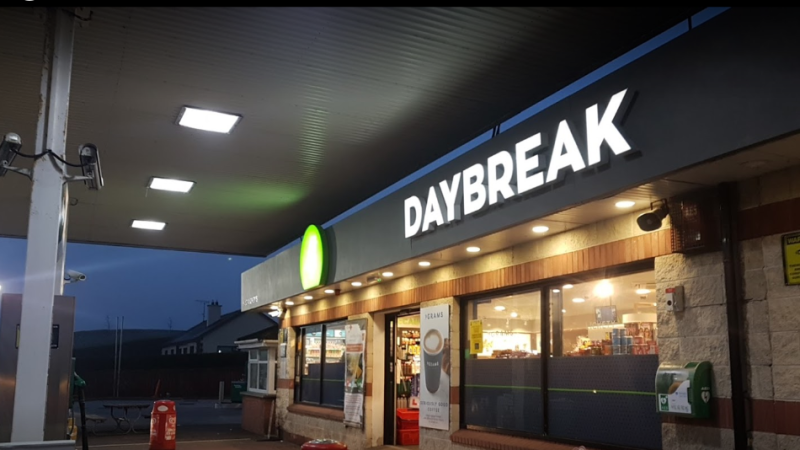Consumers pay more for local ice cream
A report conducted by Mintel reveals that Irish shoppers are willing to spend more on ice cream if it is made traditionally or has local links.
Spring has finally sprung in Ireland and as we prepare for the [somewhat] warmer months, retailers are prepped and ready to stock up on supplies of ice cream and chilled desserts. Sales in this category have risen steadily over the past few years highlighting the importance of frozen treats to the grocery and convenience sectors.
It was revealed in a report published October 2017, by Mintel – a global market intelligence agency – that in 2016 the retail value sales of ice cream was estimated at €248m across the island of Ireland, representing a 2.9 percent increase on 2015’s figures. Mintel predicts that the 2018 Irish ice cream and dessert market is forecast for further growth with sales in Ireland expected to rise by 1.7 percent with the market estimated to reach €159m in 2018 with the majority of sales coming from the chilled desserts segment.
Demand for high quality ice cream continues with 75 percent of RoI and 69 percent of NI consumers saying they would like to see a wider variety of ice cream made with high quality ingredients. Supporting local is of high importance to shoppers with 53 percent of those surveyed in NI and 51 percent in RoI noting that they would be willing to pay more for ice cream made by local specialists.
Senior consumer analyst, Brian O’Connor believes that shoppers in both RoI and NI feel strongly about supporting local farmers and home grown businesses, but noted that NI consumers were five percentage points more likely than RoI consumers to pay more for ice cream made with locally sourced milk.
“Consumers are moving towards artisanal goods and locally sourced products,” O’Connor says. “If a product can present that it is made in a traditional way or is made in small batches, this drives interest.”
O’Connor believes that retailers can help capture this market by making customers aware of anything that makes their ice cream products stand out, including highlighting the story behind the product, especially if it has been produced in a traditional way.
Health
According to the report, around a third of Irish consumers believe they are ‘somewhat more healthy’ than they were 12 months ago, with an additional percentage of those in RoI (34 percent) and NI (37 percent) feeling as though they have maintained the same level of health as last year.
Some 64 percent of all Irish consumers agree they are wary of the amount of sugar in food and drink making this Irish consumers’ biggest concern. Over half of Irish consumers feel there are not enough low-sugar ice cream options and six in 10 of those surveyed noted an interest in seeing healthier versions of their favourite ice cream brands be that low fat, sugar, or even salt.
However, O’Connor is keen to stress that taste is still key stating that there is often a degree of scepticism from shoppers on how low fat or low sugar products are manufactured.
Half of RoI consumers check products to see if the sugar is from natural sources such as honey with 68 percent saying they would avoid products that contain highly processed sugars, for example corn syrup.
Shoppers also noted an interest in trying ice creams with more plant based additives such as kale or quinoa, with 41 percent of RoI consumers keen to sample high protein ice creams.
“Surprisingly, one out of five consumers in both RoI and NI said they would be interested in breakfast themed ice cream products,” says O’Connor. “Although not by an overwhelming majority, it is interesting as it suggests going beyond seeing ice cream as a dessert or snack. High protein foods are believed by many consumers to keep you full for longer and aid weight management; therefore a high protein ice cream could be seen as a tasty way to start the day.”
Mintel recommends that dessert and ice cream brands could look towards adding in items that are perceived to be healthier, such as Greek yogurt of coconut cream, in order to make their products more attractive to the health conscious.
Nostalgia seems to have a stronger pull for RoI consumers, with 51 percent of them noting they prefer the brands of ice-cream they had when they were children, compared to 45 percent of NI consumers who had a similar sentiment
Economy
Some 59 percent of NI and 56 percent of RoI consumers have bought ice cream in the last three months to treat themselves, making this the top reason for purchasing the dessert. However, price still remains a concern to shoppers with nearly three in 10 consumers in NI feeling their financial situation will either greatly or somewhat decline over the next 12 months compared to 17 percent of RoI consumers.
O’Connor maintains that ice cream can expect to see more value growth especially for premium brands.
“Price is always going to be an important fact for consumers,” says Brian. “Consumers want value for money, meaning they want an acceptable level of quality for what they pay, and as long as the ice cream can prove it’s worth the money, consumers will pay for it.”








